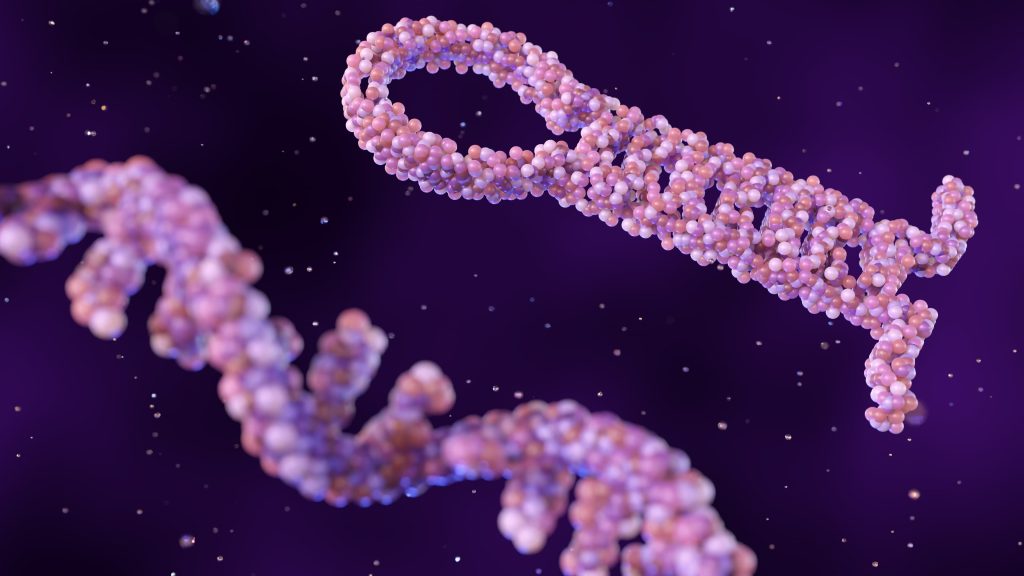
British Science Week celebrates its 30th anniversary this year, running from 8 to 17 March 2024 and promoting educational activities around the chosen theme of ‘Time’. Ageing is one facet of time relevant to us all. The biological mechanisms of ageing have been investigated as therapeutic targets over the last two decades, and this has resulted in promising approaches to help treat or prevent age-related pathologies.
As we age, the efficiency and output of our biological functions decrease from both a physical and cognitive standpoint. While humanity has measured individuals’ ages chronologically to help define old and young and predict the onset of age-related disorders such as arthritis, cancer and cardiovascular disease, recent advances in biotechnology and medicine have created a new measurement – ‘biological age’. Using certain biomarkers, biological age is a physiological measurement of an individual’s age. It considers genetic and environmental factors that can more accurately predict their susceptibility to age-related pathologies and the length of remaining life. With increasing life expectancy worldwide coupled with a continuing demographic shift towards an older population in developed countries, creating therapies to combat ageing and its associated disorders is of great importance.
What are Telomeres, and why does Telomerase Matter?
Telomeres are repeated nucleotide sequences of TTAGGG present at the ends of our linear chromosomes that help maintain genomic stability, the shortening of which (known as telomere attrition) constitutes a hallmark of ageing and has been a major focus of medical research in recent years [1]. Due to the unidirectional and template-directed nature of DNA replication, the ends of chromosomes cannot be replicated completely (the ‘end replication problem’) and, therefore, shorten over time. Once shortened to a critical point through successive replication cycles (usually 50–70 cell divisions), replicative senescence and apoptosis are induced [2]. The effects of this include reduced cell multiplication, dysfunction of mitochondria and accumulation of reactive oxygen species, resulting in the disruption of whole-body homeostasis [3].
Somatic cells have no means to prevent telomere shortening. However, stem cells do so by expressing the telomerase enzyme, a ribonucleoprotein reverse transcriptase containing an RNA template, to catalyse the addition of telomeric repeats to the end of chromosomes. However, even in these progenitor cells, telomerase activity decreases, and telomeres shorten with time, which, in turn, impacts their replicative capacity and the health of the somatic cells they produce [4]. Both chronic inflammation and oxidative stress can accelerate telomere attrition through the suppression of telomerase activity [5] and by inducing lesions on telomeric DNA, which affect their elongation and stabilisation [6]. A reason postulated for the lack of telomerase in somatic cells is the reduced risk of uncontrolled growth; it has been found that 85% of cancer types have reactivated their telomerase [7]. However, telomerase represents a vital target for therapies directed at stalling or even reversing the effects of ageing.
Telomerase in the Crosshairs
While no gene therapies for humans targeting telomerase have been developed to date, a number of studies have shown great potential when targeting telomerase to ameliorate pathologies associated with ageing. One strategy of such therapies involves activating or replacing telomerase in telomerase-deficient or telomere-shortened somatic cells. Telomerase-deficient mice that consequently showed early-onset neurodegeneration presented decreased DNA damage in brain tissue and increased neurogenesis following a replacement gene therapy approach [8]. The gene administered via an AAV9 vector encoded telomerase reverse transcriptase (TERT), a common target in telomerase therapy. Idiopathic pulmonary fibrosis, a chronic progressive lung disease that causes lung scarring, has also been targeted via a similar approach; it improved lung function and lowered inflammation and fibrosis [9]. By activating or replacing telomerase in somatic cells, researchers hope to treat degenerative diseases and increase the number of cell divisions possible before senescence is reached without inducing cancerous growth [10].
A second approach to telomerase gene therapy involves inactivating associated genes to abolish the limitless replicative potential of malignant cells. TERT promoter regions have been identified as major locations for mutations in cancerous cells, which can result in the reactivation of telomerase [11]. A CRISPR platform can target these regions to reduce TERT expression and induce cancer cell senescence [12].
Inactivation of telomerase can also be achieved by RNA approaches. Since telomerase contains an RNA template to direct the extension of telomeres, this region of the complex can be blocked by complementary oligonucleotides as an anticancer therapeutic. One study on liver cancer cells used a combination of antisense oligonucleotides (ASOs) towards the telomerase RNA component, hTR, in combination with the cell cycle-associated centromeric protein, CENP-B, which resulted in a reduction in both tumour necrosis factor and transforming growth factor [13]. As such, ASOs represent an effective alternative therapeutic strategy to modulate telomerase activity. The near-universal reactivation of telomerase as a hallmark for cancer cells and their associated replicative immortality makes the enzyme an attractive target for highly selective cancer therapeutics [14].
A Timely Issue
As ageing affects every individual worldwide, there will always be a need for therapeutic strategies to target pathologies associated with this process. Even though telomere attrition and telomerase dysfunction represent only one hallmark of ageing, the implications of these aberrant mechanisms are widespread and are linked to several ageing-related diseases. Telomeres, therefore, represent a timely opportunity for research and development and for bringing new therapies to market. As such, each of us should eagerly anticipate future developments that will emerge from this space.
Securing timely patent protection for your innovation is a key consideration for any inventor. One must often walk a tightrope whereby a patent is filed early enough in the R&D process before any potential competitors but not so early that a lack of data leads to the invention being insufficiently disclosed in the application for it to be carried out by a person skilled in the art. This is especially important for biotechnology inventions as patent offices around the world try to prevent speculative applications and ensure that the patent bargain is upheld by patent proprietors. At GJE, we are acutely aware of the importance of keeping up to date with the latest developments in biotechnology, in the knowledge that it helps us provide the best advice to our clients working in this field, including when best to file a patent in your R&D process. To discuss your biotechnology IP strategy, please contact us at biotech@gje.com.
References
[1] Hallmarks of aging: An expanding universe – PubMed (nih.gov)
[2] The serial cultivation of human diploid cell strains – ScienceDirect
[3] Consequences of telomere shortening during lifespan – ScienceDirect
[6] Oxidative guanine base damage regulates human telomerase activity – PMC (nih.gov)
[7] Senescence and immortalization: role of telomeres and telomerase – PubMed (nih.gov)
[11] Understanding TERT Promoter Mutations: a Common Path to Immortality – PMC (nih.gov)
[12] Programmable base editing of mutated TERT promoter inhibits brain tumour growth – PubMed (nih.gov)
[14] TARGETING TELOMERASE FOR CANCER THERAPY – PMC (nih.gov)


